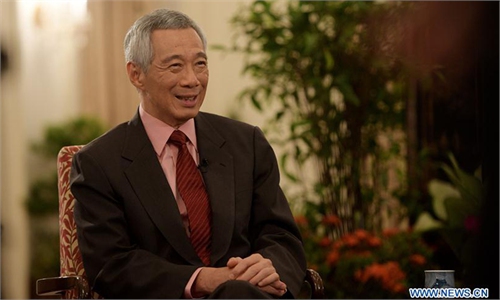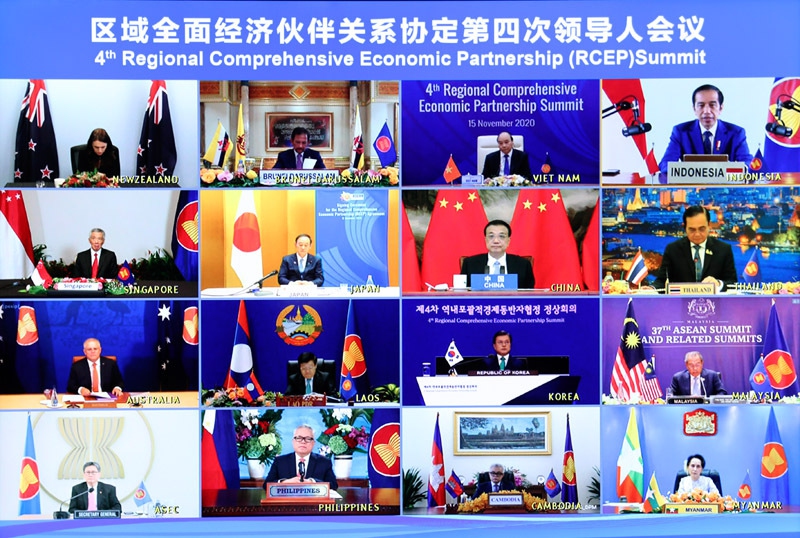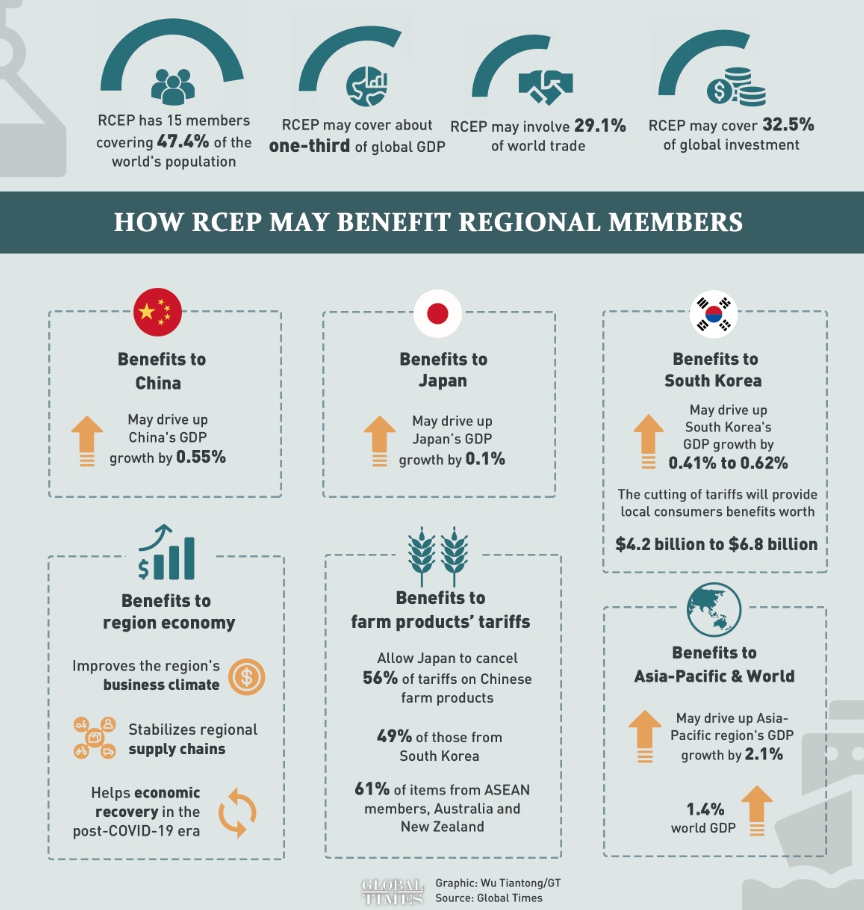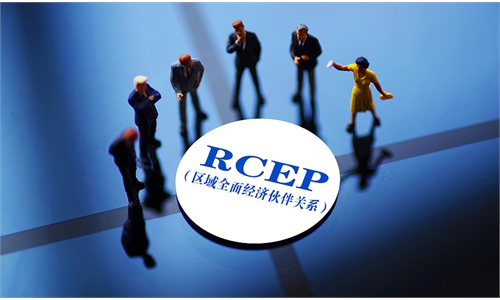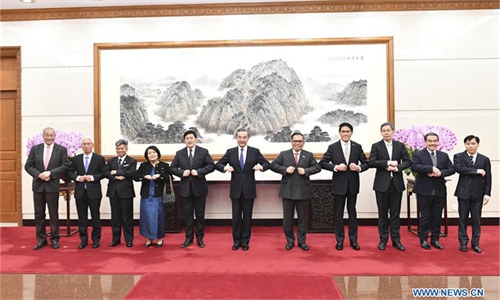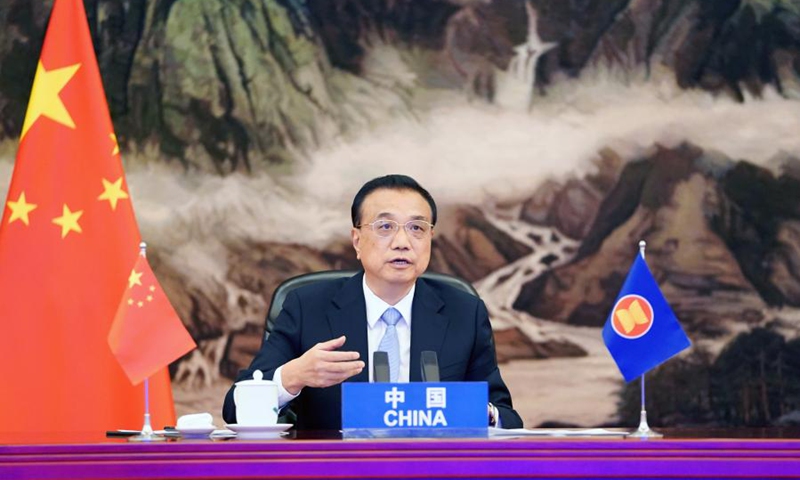The leaders of Asean have succeeded in persuading their top trading partners to start negotiations on the Regional Comprehensive Economic Partnership (RCEP) to create the world’s largest trading bloc.
Cambodian Prime Minister Hun Sen formally launched the negotiations on the RCEP during the Asean Summit and Related Summits yesterday at a meeting at the Peace Palace in the western part of Phnom Penh.
The leaders of the 10-member regional grouping and their six major trading partners agreed to create a trading bloc that will comprise more than three billion people and with a combined GDP of US$15 trillion, roughly equal to that of the US.
Asean also launched the US-Asean Expanded Economic Engagement initiative, aimed at expanding trade and investment ties with the US and smoothing a path for the Trans-Pacific Partnership.
Trade Minister Gita Wirjawan said that plans for the RCEP would be welcomed by world leaders from Australia, India and the US as an amazing tool of economic integration that might become the benchmark for other regions.
“The spirit is not that of a zero-sum game. The economic integration of other regions is complementary to the economic integration among [Asean] member countries,” Wirjawan told The Jakarta Post on the sidelines of the event.
“Many Asean member nations are conducting bilateral talks that are just fine, because they are complementary [to the RCEP],” Wirjawan said.
The minister has previously said that the RCEP would “rewrap” five current free trade agreements (FTAs) with Asean’s six major trading partners, China, Japan, India, South Korea, Australia and New Zealand.
Asean’s FTA with Australia and New Zealand covers both nations.
Wirjawan said that the prospects for the RCEP were currently brighter than of the Trans-Pacific Partnership (TPP) free trade agreement touted by the US, as Asean already had FTAs in place, albeit mostly on goods and tariffs, with most of the nations involved.
The RCEP will expand upon existing FTAs to include agreements covering services and investment.
Asean is currently in discussions to expand its FTA with India, which it expects to complete in time for the Asean-India Commemorative Summit next month in India. Similar negotiations will follow with Japan.
Earlier in the day, there was a global dialogue between Asean leaders with the heads of world financial institutions, including Asia Development Bank President Haruhiko Kuroda, IMF Managing Director Christine Lagarde, World Bank Managing Director Caroline Anstey, UN Conference on Trade and Development Secretary-General Supachai Panitchpakdi and World Trade Organisation Director-General Pascal Lamy.
Wirjawan said that the leaders agreed that Asean had shown itself to be resilient amid the global financial crisis, becoming a model for other economic zones.
“Also discussed were efforts to face financial crises, such as the Chiang Mai Initiative pool of funds, which has been increased from $120 million to $240 million,” Wirjawan said.
Another important decision that was made during meetings and summits in Cambodia between November 15 and 20 was to start additional talks on implementing the Asean Economic Community on Dec. 31, 2015, to aid member nations in their preparations.
Asean’s leaders also adopted the Asean Human Rights Declaration, despite critics who said that the document was not up to universal standards of human rights protection, promotion, monitoring and enjoyment.
At the end of the closing ceremony, Hun Sen presented the gavel to Brunei Darussalam Sultan Hassanal Bolkiah to mark the handover of Asean’s rotating chair from Cambodia to Brunei starting on January 1.
Bolkiah said it would be the fourth time that Brunei would hold Asean’s chair, and that the nation had chosen a motto of “Our People, Our Future Together” for Asean for 2013.
Asean Secretary-General Surin Pitsuwan of Thailand also brought to an end to his term. He will be replaced by Vietnamese deputy foreign minister Le Luong Minh, who has been endorsed by Asean’s member nations.
___________________________________________
An alternative to US President Barack Obama’s Trans-Pacific Partnership, the 16-member Regional Comprehensive Partnership (RCEP) is the newest concept for an economic union between ASEAN and six major trading partners, China, Japan, India, South Korea, Australia and New Zealand.
The RCEP is supposed to be a trading bloc that will comprise more than three billion people with a combined GDP of $20 trillion, or almost one-third of the global economy. Officials hope to have the talks concluded by the end of 2015.
Source: Investvine
___________________________________________
Association of Southeast Asian NationsThe First ASEAN summit was held in February 1976 in Bali.
The most recent 21st Summit was held from November 18-20, 2012 in Phnom Penh, Cambodia
_______________________________________________
Video: ASEAN agenda_______________________________________________
Video: Opening Ceremony of the 21st ASEAN Summit______________________________________________
Trans-Pacific Partnership
On November 12, 2011, the Leaders of the nine Trans-Pacific Partnership countries – Australia, Brunei Darussalam, Chile, Malaysia, New Zealand, Peru, Singapore, Vietnam, and the United States – announced the achievement of the broad outlines of an ambitious, 21st-century Trans-Pacific Partnership (TPP) agreement that will enhance trade and investment among the TPP partner countries, promote innovation, economic growth and development, and support the creation and retention of jobs.
INCREASING AMERICAN EXPORTS, SUPPORTING AMERICAN JOBS
President Obama announced in November 2009 the United States’ intention to participate in the Trans-Pacific Partnership (TPP) negotiations to conclude an ambitious, next-generation, Asia-Pacific trade agreement that reflects U.S. priorities and values. Through this agreement, we are seeking to boost U.S. economic growth and support the creation and retention of high-quality jobs at home by increasing American exports to a region that includes some of the world’s most robust economies and that represents more than 40 percent of global trade. The Obama Administration has been working in partnership with Congress and consulting closely with stakeholders around the country to ensure TPP addresses the issues that American businesses and workers are facing today, and may confront in the future.
The Trans-Pacific Partnership Framework
The United States, along with Australia, Brunei Darussalam, Chile, Malaysia, New Zealand, Peru, Singapore, and Vietnam are working to craft a high-standard agreement that addresses new and emerging trade issues and 21st-century challenges. The agreement will include:
• Core issues traditionally included in trade agreements, including industrial goods, agriculture, and textiles as well as rules on intellectual property, technical barriers to trade, labor, and environment.
• Cross-cutting issues not previously in trade agreements, such as making the regulatory systems of TPP countries more compatible so U.S. companies can operate more seamlessly in TPP markets, and helping innovative, job-creating small- and medium-sized enterprises participate more actively in international trade.
• New emerging trade issues such as addressing trade and investment in innovative products and services, including digital technologies, and ensuring state-owned enterprises compete fairly with private companies and do not distort competition in ways that put U.S. companies and workers at a disadvantage.
Leading Asia-Pacific Regional Integration Initiative
The TPP is the most credible pathway to broader Asia-Pacific regional economic integration. After nine rounds of negotiations, the nine countries made solid progress and have now achieved the broad outlines of an agreement. During their meeting on the margins of the APEC meeting in Honolulu, the TPP Leaders agreed to seek to conclude the agreement as quickly as possible and instructed their negotiators to expedite their work. The nine countries also welcomed the interest expressed by other countries in joining the agreement and will begin bilateral processes with these interested countries to discuss their readiness and ambition to meet the standards and objectives of the TPP. Once these bilateral processes have concluded, all current Parties will decide on inclusion of new members by consensus.
American Competitiveness in the Asia-Pacific
The TPP is a key element of the Obama Administration strategy to make U.S. engagement in the Asia-Pacific region a top priority. The huge and growing markets of the Asia-Pacific already are key destinations for U.S. manufactured goods, agricultural products, and services suppliers. As a group, TPP countries are the fourth largest goods and services export market of the United States. U.S. goods exports to the broader Asia-Pacific totaled $775 billion in 2010, a 25.5 percent increase over 2009 and equal to 61 percent of total U.S. goods exports to the world. U.S. exports of agricultural products to the region totaled $83 billion in 2010 and accounted for 72 percent of total U.S. agricultural exports to the world. U.S. private services exports totaled $177 billion in 2009 (latest data available), 37 percent of total U.S. private services exports to the world. America’s small- and medium-sized enterprises alone exported $171 billion to the Asia-Pacific in 2009 (latest data available).
_____________________________________________
Video: Trans-Pacific Partnership negotiated in secret_____________________________________________
Video: Dennis Kucinich discusses the secrecy of the Trans Pacific PartnershipDennis Kucinich (Democrat) is a member of the U.S. House of Representatives from Ohio’s 10th districtOctober 18, 2012 before the elction of the U.S. President took place on November 6, 2012
_____________________________________________
Sources: Novan Iman Santosa The Jakarta Post
Related post: The US Pacific free trade deal that's anything but free? US launches financial attacks against its allies!


 Pact can lead to greater market access
Pact can lead to greater market access 

